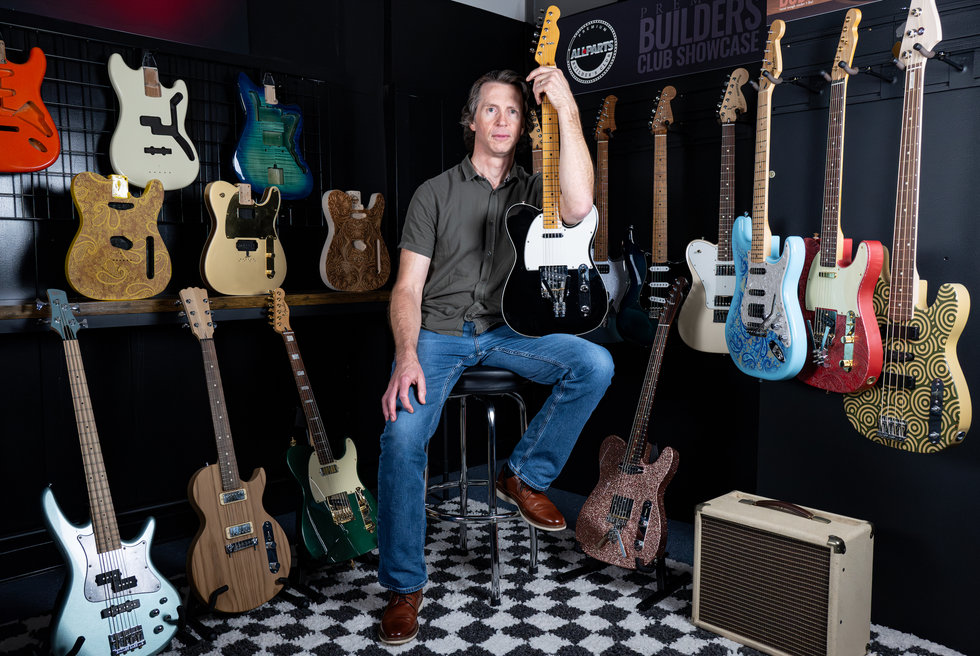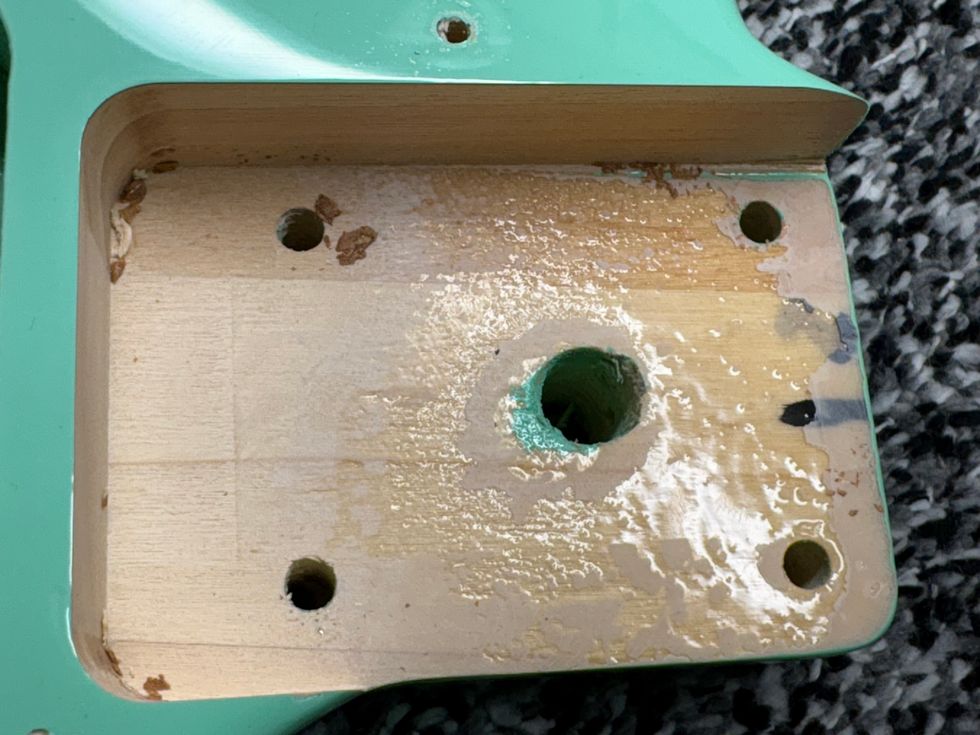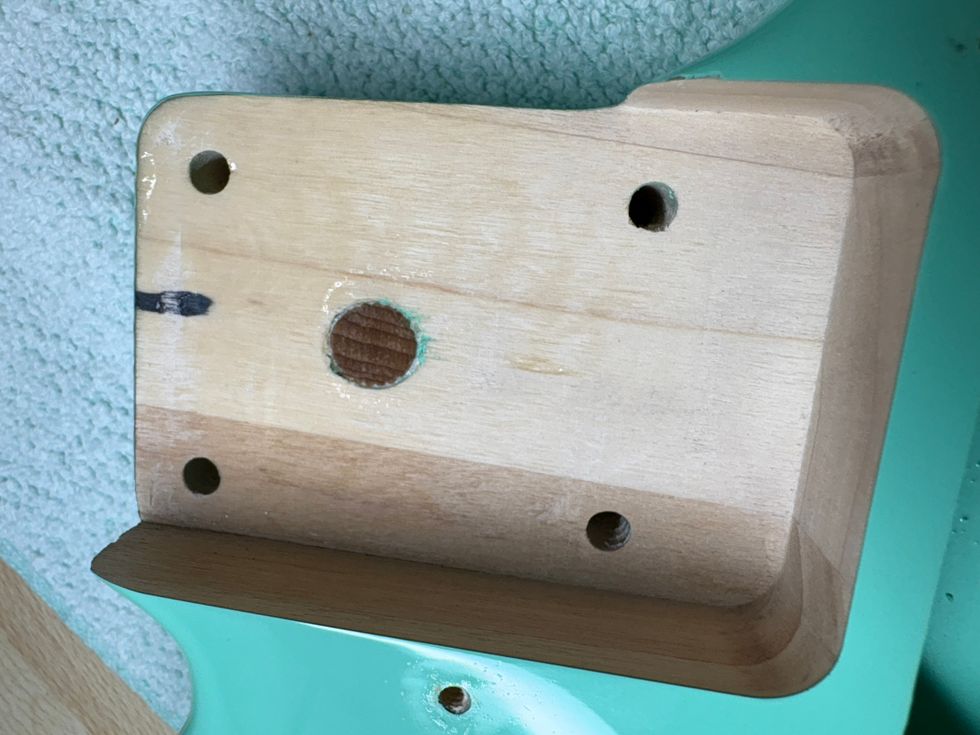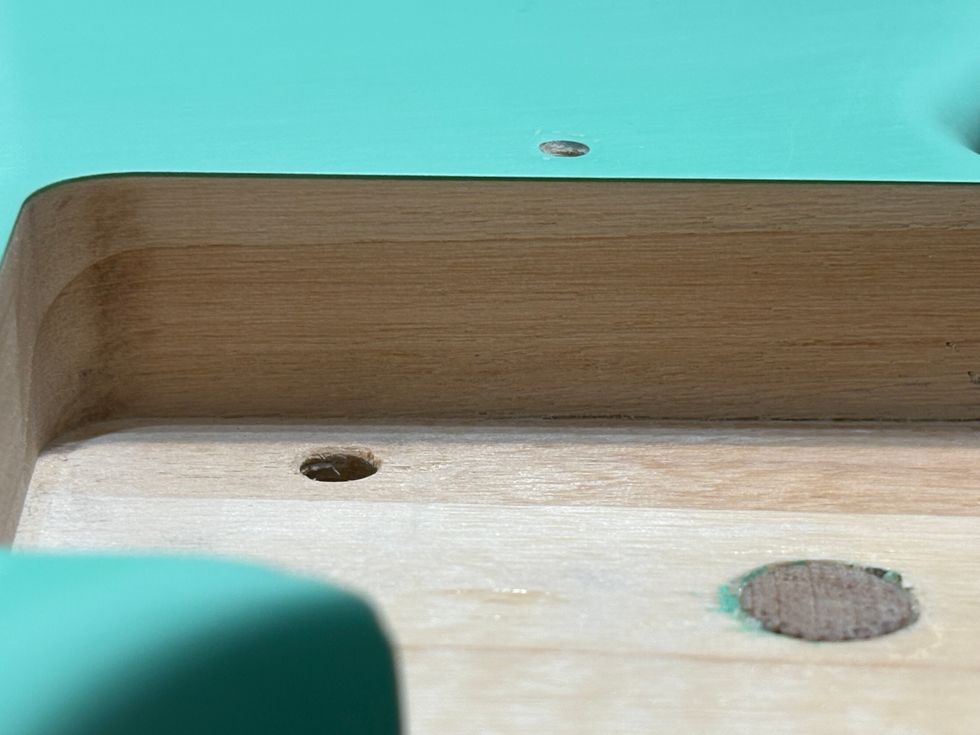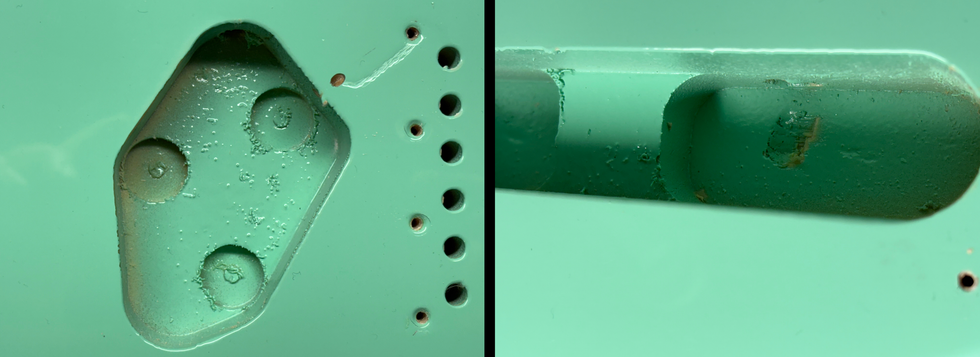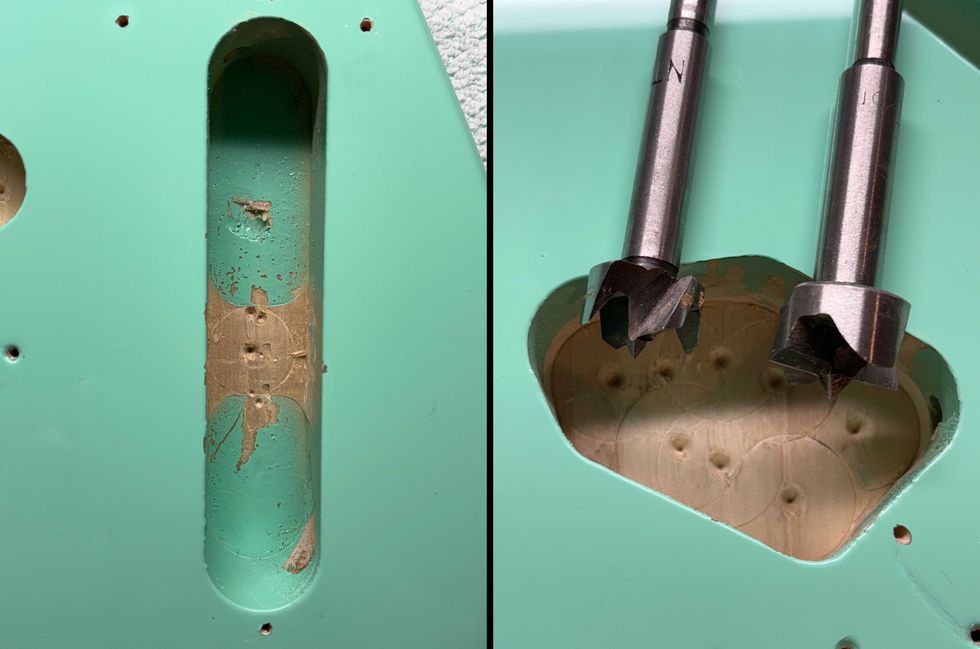| The Series Part 1: Getting Started Part 2: Strings Part 3: Compression Part 4: Pickups Part 5: EQing, at last! |
Your Space, and the Space Inside Your Guitar
Are you a solo guitarist, a singer-songwriter, fingerstylist or flatpicker? Do you play on your own or in a band? Does your band have a drummer and an electric bass player, or are you competing with banjo, mando and fiddle?
The first thing that you have to consider is your tonal space. If you’re on stage all alone, you want a very different sound than if you are on stage with other instrumentalists. If you’re in a bluegrass band, you have a completely different space than if you play folk-rock. Right from the start, we see that the EQ starts with the choice of instrument. Many singer-songwriters favor the smaller bodied OM or Auditorium-style guitars, while bluegrass ain’t bluegrass if it’s not played on a dreadnaught. Glenn Frey of the Eagles plays a dreadnaught Takamine EF360GF (reviewed May 2009), but it’s got a very special voice to it, specifically designed to work on stage with a full rock band. In a phone interview Frey explained, “For playing live it’s important to have a guitar with a distinct high end and not too many overtones in the low and mid ranges. That’s a great sound for sitting in your living room, but a live sound engineer has to squash it. For mixing live, it’s better to have a guitar that’s perfect mid-to-top, because you can always add lows.”
If you’re playing with a band in a rock or folk-rock setting, that mid-to-top range is where you live and breathe. If your guitar has too much bottom end, it’ll compete with the bass player and you’ll end up buried in mud and that is not where you want to be.
In a bluegrass or old-timey band, you can be a little more aggressive with the bottom end, because stand-up basses are such different animals than their plugged-in brethren. You’re not competing for “sustained” space, because the doghouse goes thump instead of boooooommmm. But think about some great bluegrass guitar players, like Tony Rice and Clarence White. Their guitars are bassy like a cannon is bassy when it fires a shot through a mess of church bells. There’s nothing flabby or muddy about that sound; it’s tight and lean, a great bottom end that might be compared to “Buns of Steel” (the guitars... ahem... no disrespect to Mr. Rice, sir, or Mr. White, may he rest in peace). This is the house that Martin built, based on those big dreadnaughts that had the low end to hold things together and the mid-to-top power to cut through it.
If you’re a singer-songwriter or solo guitarist, you might be drawn to a gentler, yet no less full-bodied sound. Orchestra and auditorium models, or the trendy “small jumbo” guitars, are likely choices here. A thinner body with a deeper waist, these smaller bodies have really come into their own in recent years, offering phenomenal clarity, high- and low-end sustain, warmth and richness. These guitars can give you the moon, the stars, and the dark matter between them, which is why so many folks are curious about how to EQ guitars these days. But for a solo guitar-slinger or a songwriter, these are often the most seductive axes on the wall.
There are also more kinds of wood in use today than ever before, some that we can’t even pronounce. Indian rosewood and mahogany are still the most commonly used woods, but we’re seeing more variety than was thinkable only a few years ago. The kind of wood you choose makes a huge difference, but that’s also too big of a subject to go into here. We covered some of the new woods available in July 2009, “Sustainable Tone.”
A lot of folks have one guitar that they use for everything they do (bless their hearts), and those workhorse instruments tend to be Martin, Taylor, Larivee, Takamine, Alvarez, Gibson and Guild, among a few others. These makers do have some “all ‘rounders” that work nicely in a lot of situations. But, other players have specialized tools for different settings. For example, I have a guitar for recording, a guitar for the couch, a guitar for gigging solo and a guitar for going out and making an unholy racket with my bass player and drummer. All very different guitars, they have one thing in common; my hands.
Hands and Strings
Aha! There’s the next layer of complexity to take a look at before we can even start talking about EQ. Hands, and of course, strings. Hands first: Do you play with a picks or fingers? Flatpicks, fingerpicks, plastic or metal picks? Nails or flesh? Do you use your own nails or do you augment with acrylic powders, press-on nails or something else?
Generally speaking, flesh is the softest, warmest tone; nails slightly brighter; plastic fingerpicks a little brighter yet; and metal... well, Leo Kottke calls metal fingerpicks a “Freddy Krueger starter set.” Flatpicks come in endless materials and variations, so season to taste, so to speak. Find one that feels and sounds good to you and go for it, and experiment with the way you hold the pick, too. Using the rounded side instead of the pointy tip (a la Tony Rice) gives you a slightly warmer sound (and, in my experience, a whole new level of control).
Strings make a huge difference in your tone, and just how many different kinds of strings are there? Bronze, bright bronze, phosphor bronze, and what’s sometimes referred to as “white bronze,” which is probably just a fancy way of saying “nickel,” coated, colored, chromed, sliced, diced and scrambled.
We have in the PG family someone who knows more about strings and their impact on tone than anybody I’ve ever talked to: Dean Farley, of Signal Chain fame. Next month I will share a conversation with Dean about this very topic, and then we can get into pickups, preamps and the red meat of the matter!
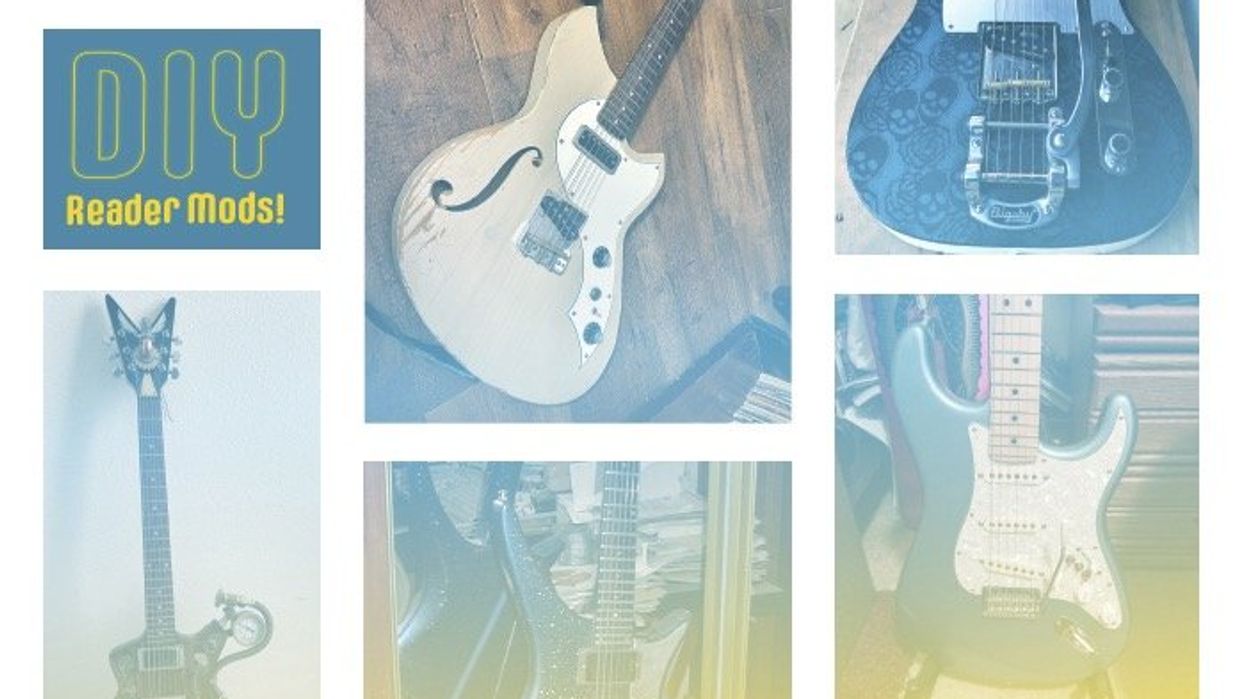
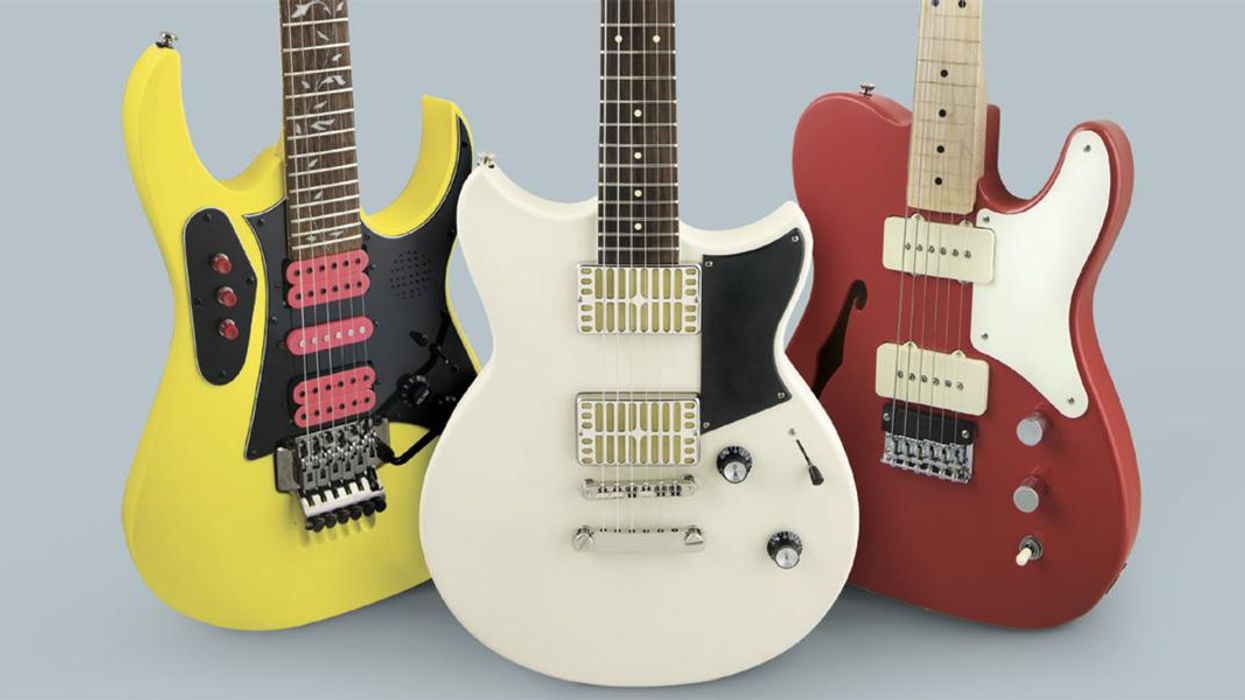
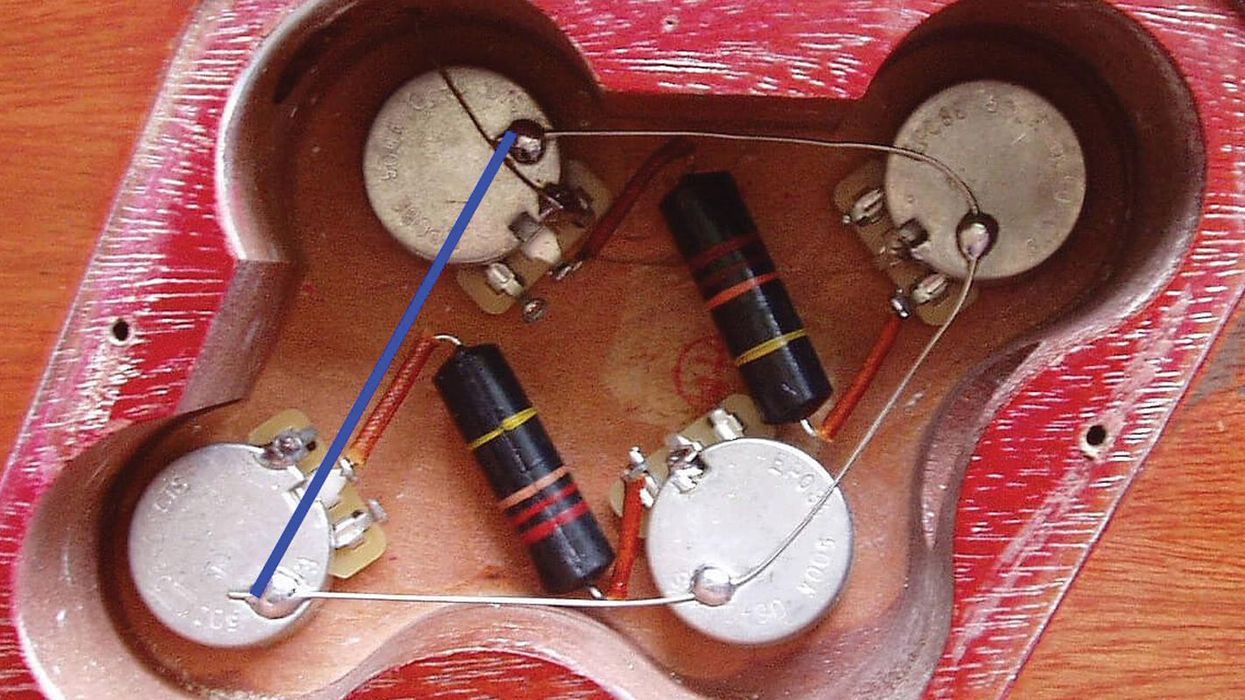
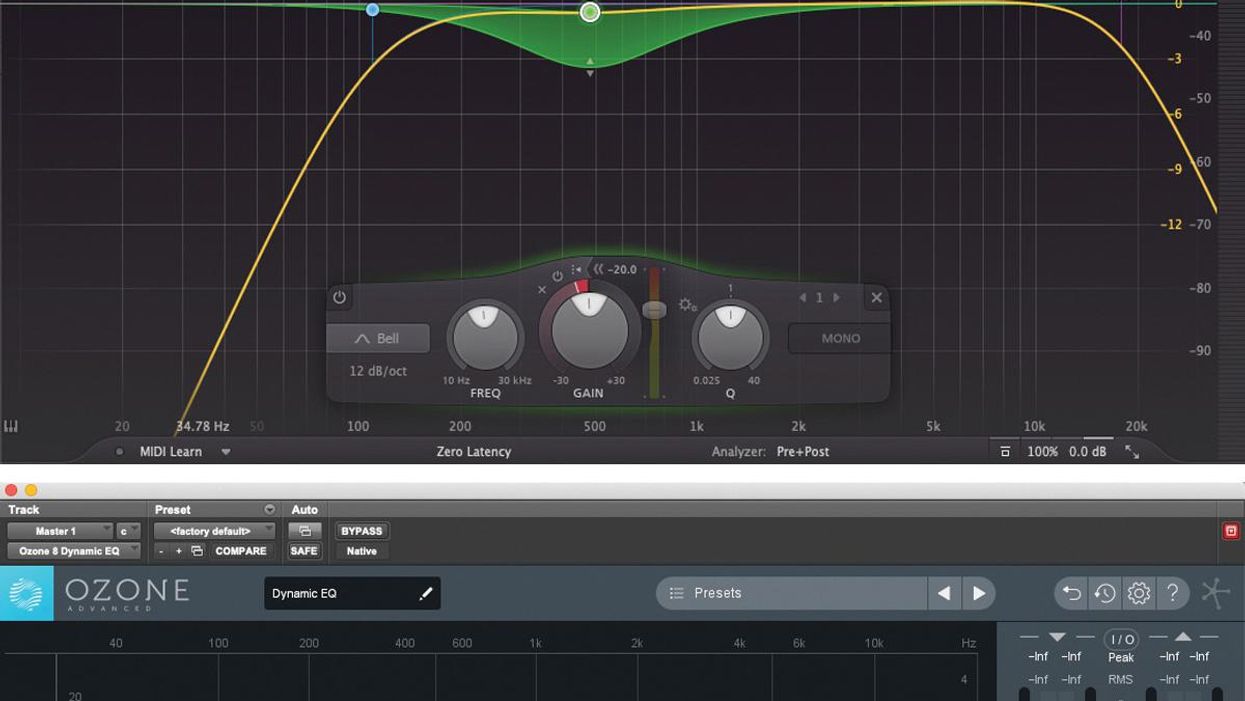







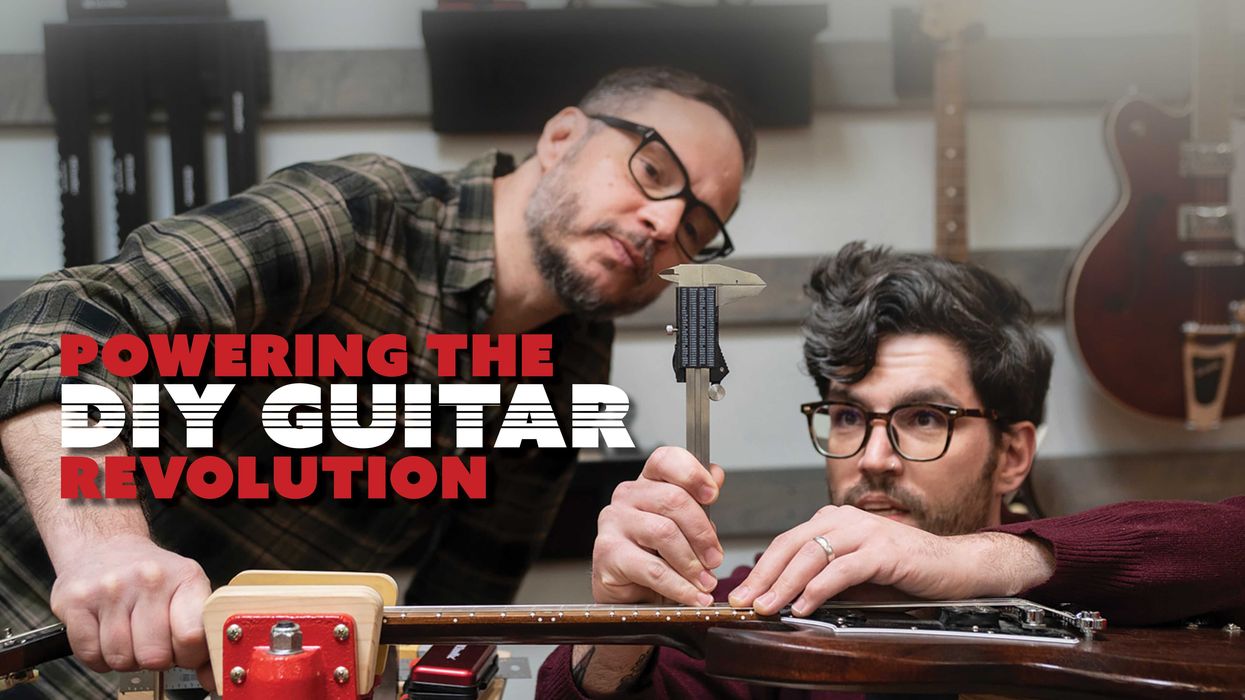
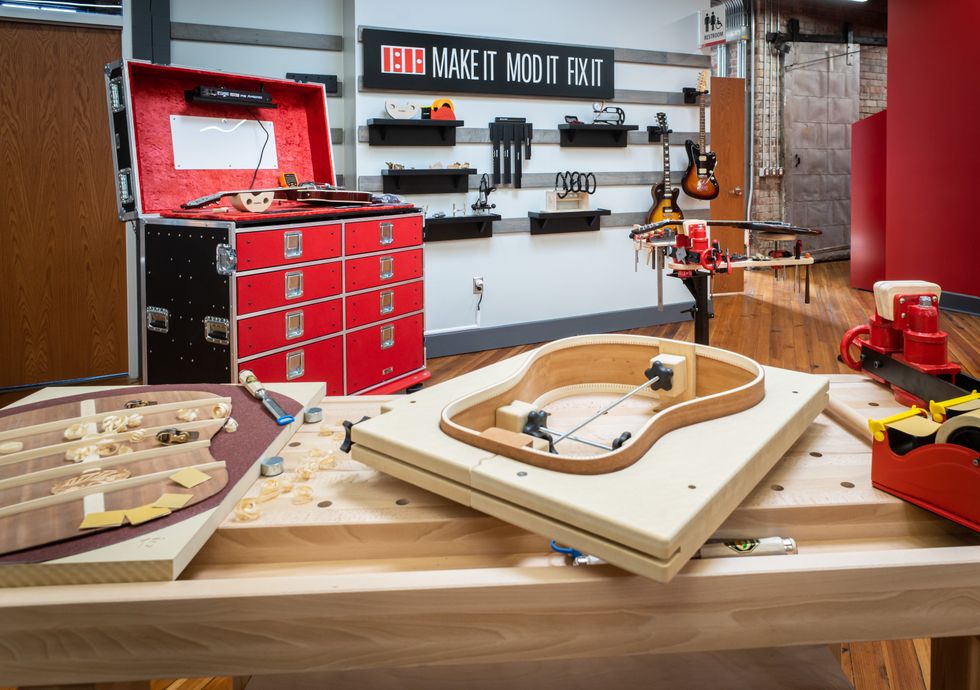

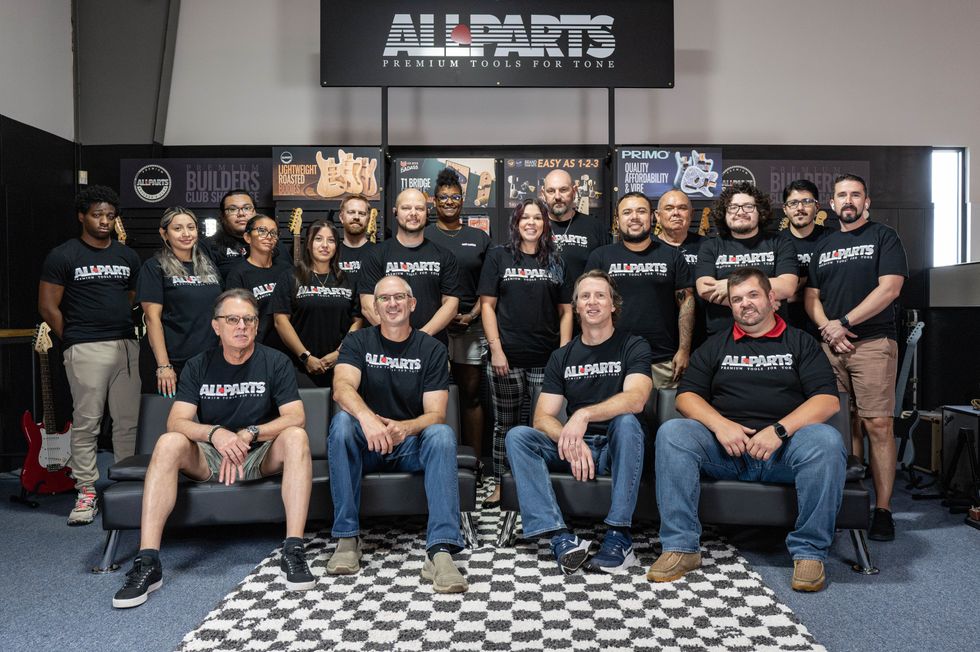 The Allparts team at their Houston warehouse, with Dean Herman in the front row, second from right.Photo by Enrique Rodriguez
The Allparts team at their Houston warehouse, with Dean Herman in the front row, second from right.Photo by Enrique Rodriguez